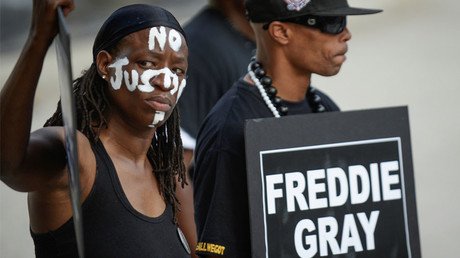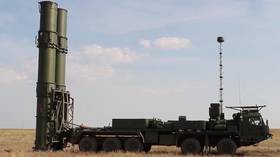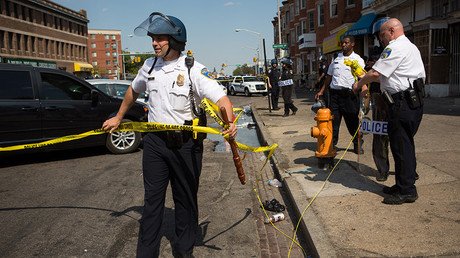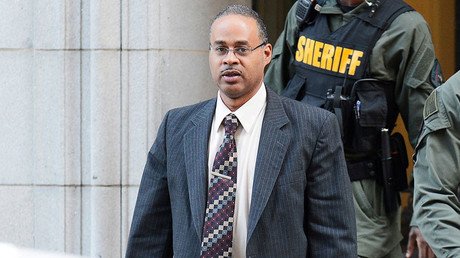Baltimore’s 2017 murder rate breaks records, as 2 fatal shootings kick off 2018
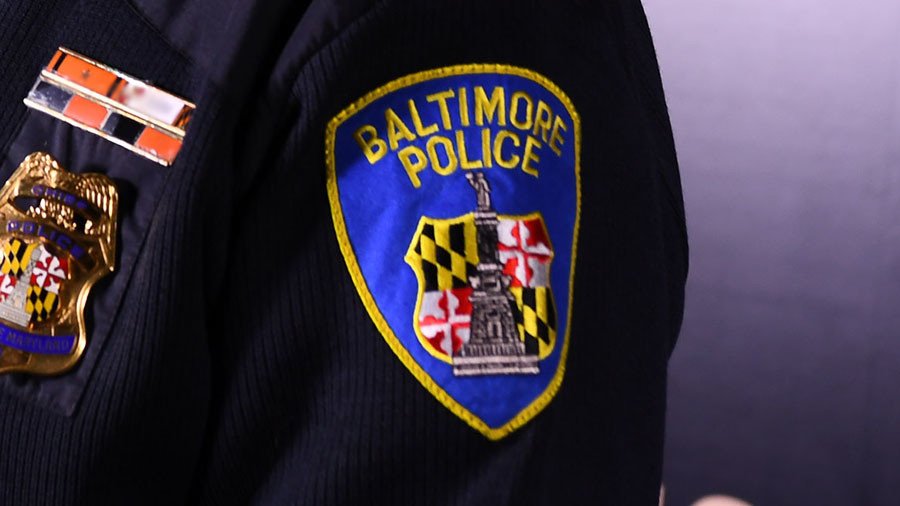
The shrinking city of Baltimore, Maryland, has set a new record for per-capita homicides in 2017, with nearly 56 homicides per 100,000 people. There have already been at least two fatal shootings in 2018.
The year ended with a bang in Baltimore, as two fatal shootings brought the number of murders in the city to 343 in 2017, according to data from the Baltimore Sun.
The city set a record for homicides per-capita in 2017, with 55.8 killings per 100,000 people, according to the Sun. There were more murders in Baltimore than New York City, which has a population of more than 8.5 million. Over recent decades, the population of Baltimore has fallen to 614,664, roughly the same number of people that lived in the city a century ago, according to the latest available data from the US Census Bureau.
This is the third consecutive year the city has recorded more than 300 murders.
“Not only is it disheartening, it’s painful,” Baltimore Mayor Catherine Pugh told the Associated Press.
Baltimore registered 353 murders in 1993, but there were roughly 120,000 more residents living in the city at the time. The murder rate per-capita that year was roughly 48 per 100,000 people.
On Monday, the Baltimore Police Department (BPD) rang in the new year with two new murder investigations on the first day of 2018.
At 3:40pm Monday, officers responded to a shooting in the Southern District and found an unidentified male who had been shot in the neck. The victim was transported to a hospital, where he was pronounced dead “a short time later.”
Happening Now: @BaltimorePolice on Eagle Street at Payson..man found shot in the neck. Baltimore’s first 2018 homicide. Victim yet to be identified. Gunman on the loose. @FOXBaltimorepic.twitter.com/9GAB9b66nk
— Keith Daniels Fox45 (@KeithDFox45) January 1, 2018
Later that day, at 5:45pm, officers responded to a double shooting in a parking lot, where two male victims were suffering from gunshot wounds. The first victim was transported to the hospital with gunshot wounds to the head and the torso. He was also pronounced dead “a short time later.” The second victim was transported to the hospital with a non-life threatening gunshot wound to the hip.
Police have opened investigations into both shootings, as well as several other non-life threatening shootings that occurred Monday.
Many residents blame the surge in murders on the police, who have been accused of relaxing police patrols and backing off in dangerous neighborhoods amid concerns of appearing racist following the rise of the Black Lives Matter movement.
The homicide rate in Baltimore shot up in 2015 after Freddie Gray died in police custody and the city experienced the worst riots in decades.
“The conventional wisdom, or widely agreed upon speculation, suggests that the great increase in murders is happening partly because the police have withdrawn from aggressively addressing crime in the city’s many poor, crime-ridden neighborhoods,” Donald Norris, professor emeritus of public policy at the University of Maryland Baltimore County, told the Associated Press.
On Sunday, Pugh delivered a “Year-End, Year-Ahead Message” on the gun violence that has been plaguing the city.
“Let me be clear, we have endured too much violence, too much pain and sorrow… Too much loss,” Pugh said. “Our hearts ache for our City, a truly great City, whose identity has been defined by these tragedies for too long.”
As we prepare to celebrate New Year's Eve, take time to listen to a message from @MayorPugh50pic.twitter.com/TmnqrnfDC3@ChiefNilesRFord
— Baltimore Fire (@BaltimoreFire) December 31, 2017
Pugh said that bringing down the levels of violence was Baltimore’s “highest priority.” To achieve this goal, the city is hiring new officers, reforming their training policies and updating police technology.
In addition, the mayor said she will replace more than 70,000 broken street lights, create affordable housing for residents, fight the opioid epidemic, find jobs for residents, and make the Baltimore City Community College tuition-free for any students who graduate from a Baltimore City public high school.
“All of these actions,and many others, are making a positive, measurable difference. The results, I realize, don't happen quick enough. But you can be assured that they will happen,” Pugh said.
“Without question, getting illegal guns out of the hands of criminals and off our streets is essential. But equally essential is that we address together the conditions that give rise to violence – hopelessness, lack of opportunity, drug dependence, lack of basic needs, lack of job and economic opportunity.”
#Baltimore murder rate continues to skyrocket https://t.co/FYQQ6qY4BO
— RT America (@RT_America) December 4, 2017
The mayor said the Violence Reduction Initiative she initiated three months ago has been working, citing statistics from November, when she says there were 23 murders compared to an average of 30-35 murders a month.
On Thursday, Pugh and the BPD held a citywide candlelight vigil at the Baltimore War Memorial Building to pay tribute to those lost to violence this year.
Tonight we join @MayorPugh50 and members of our community for a candlelight vigil to honor & remember the lives of those lost to violence in Baltimore. pic.twitter.com/zieXdC6tFf
— Baltimore Police (@BaltimorePolice) December 29, 2017
Pugh promised that her office would “change the future of Baltimore,” and that “this will become the safest city in America,” according to the Sun.
